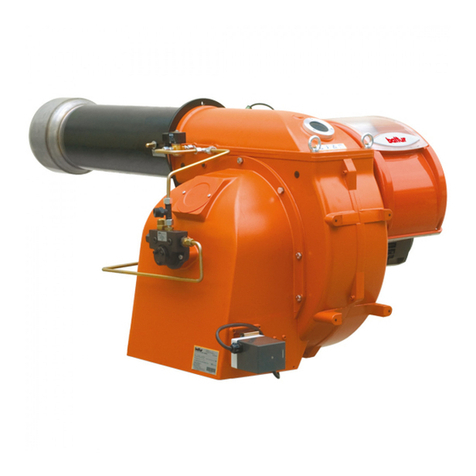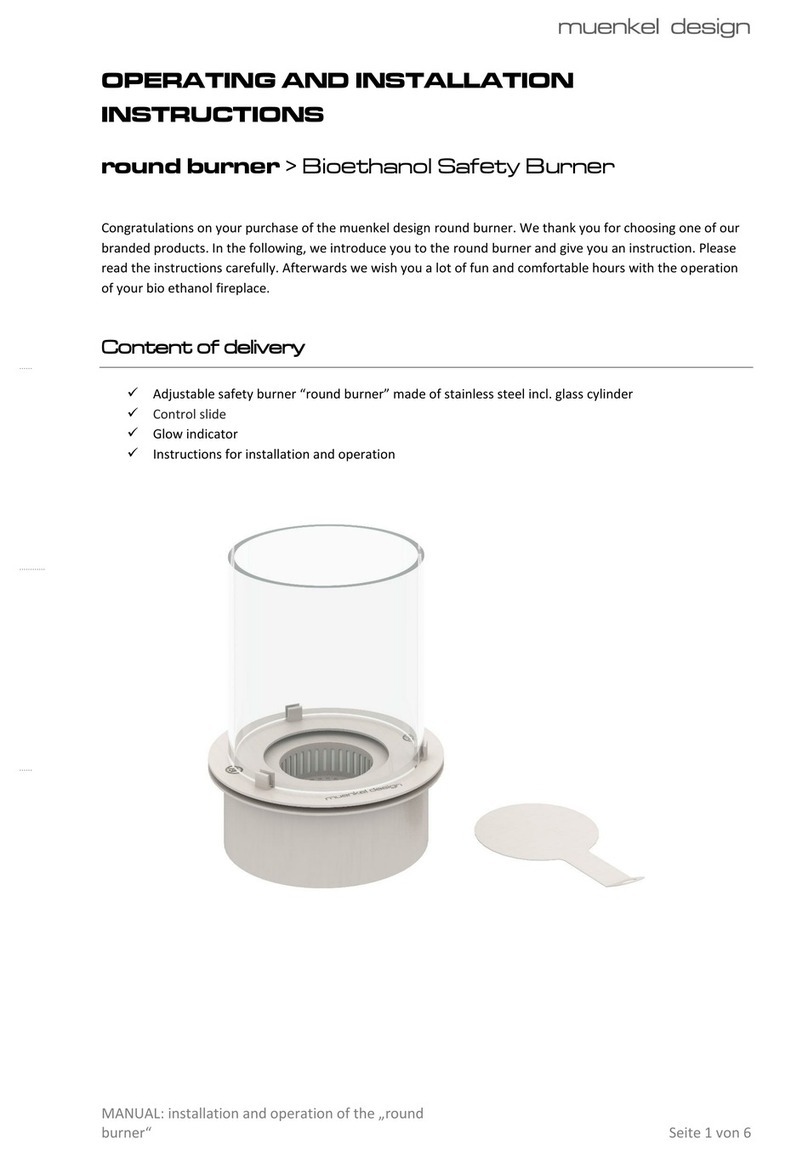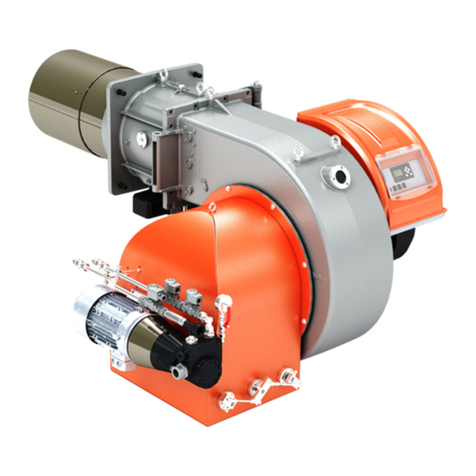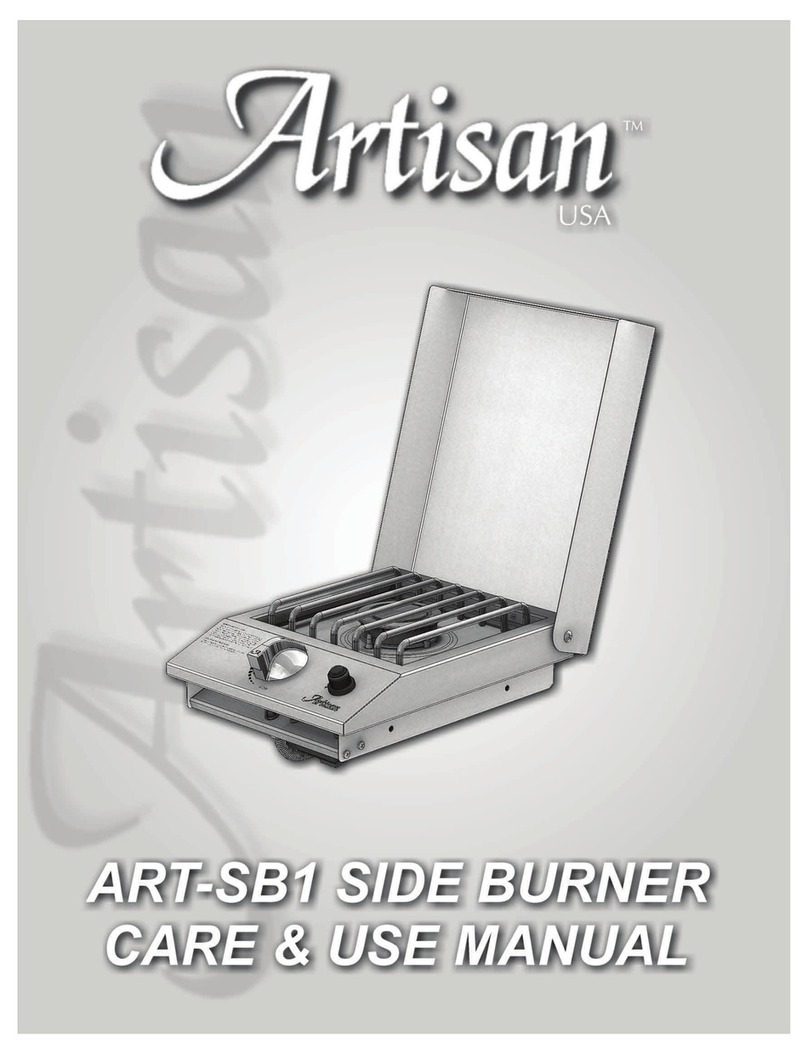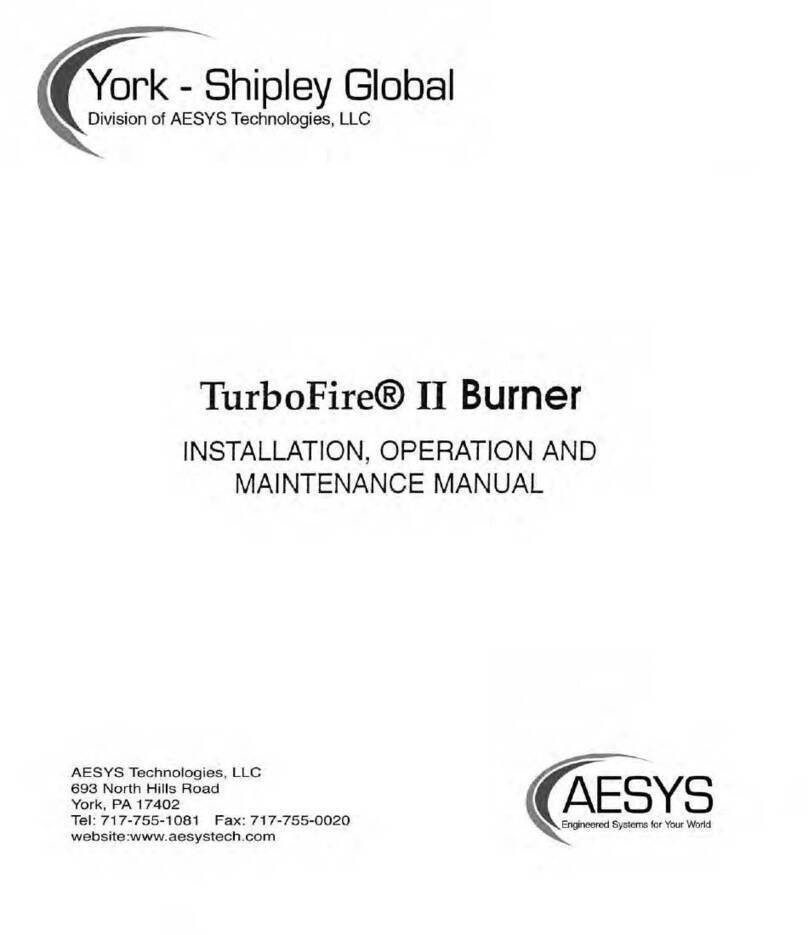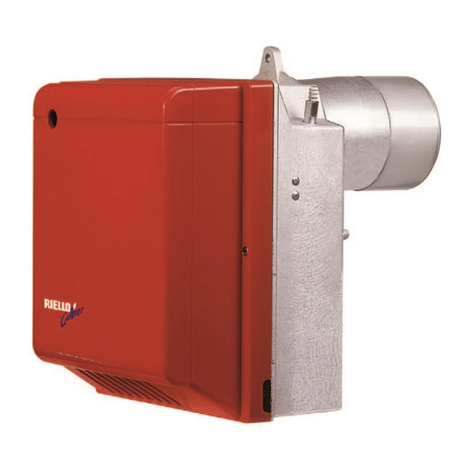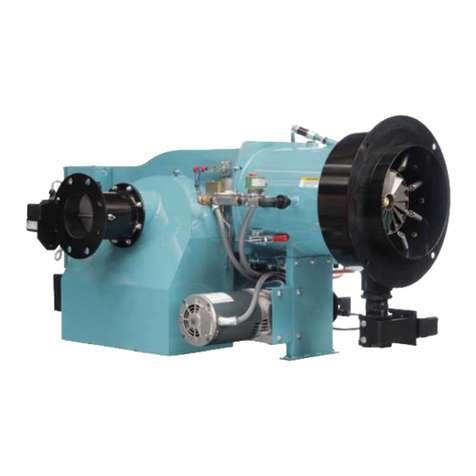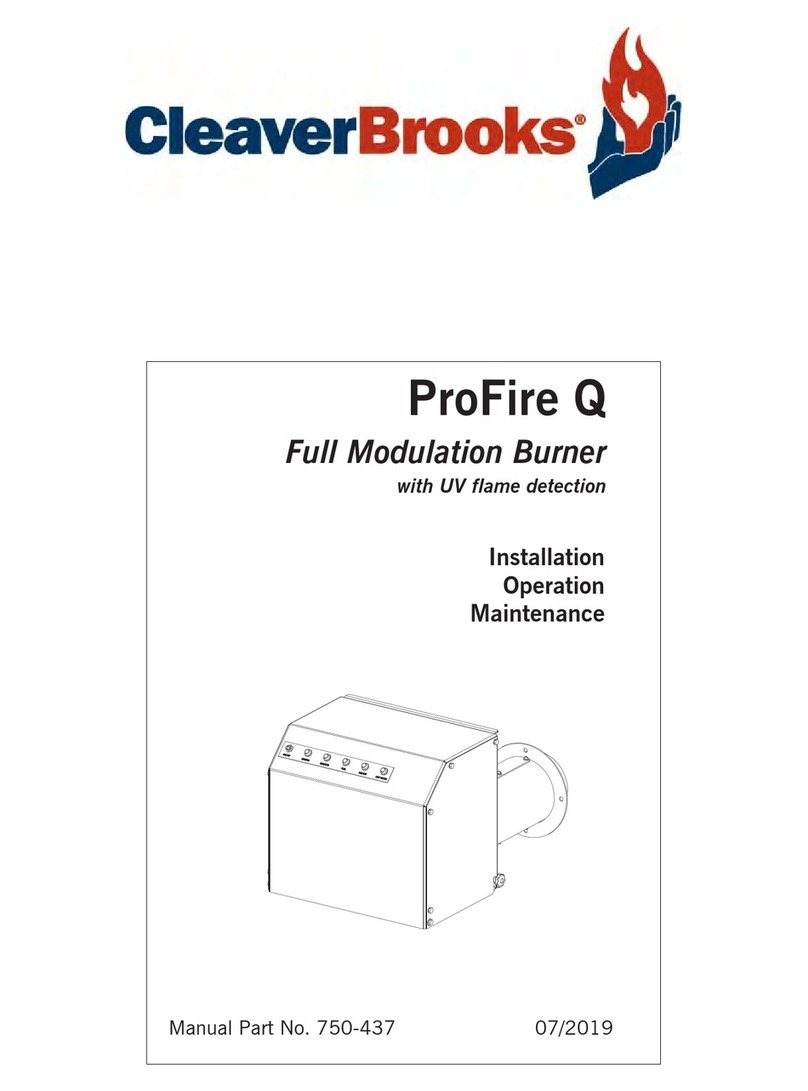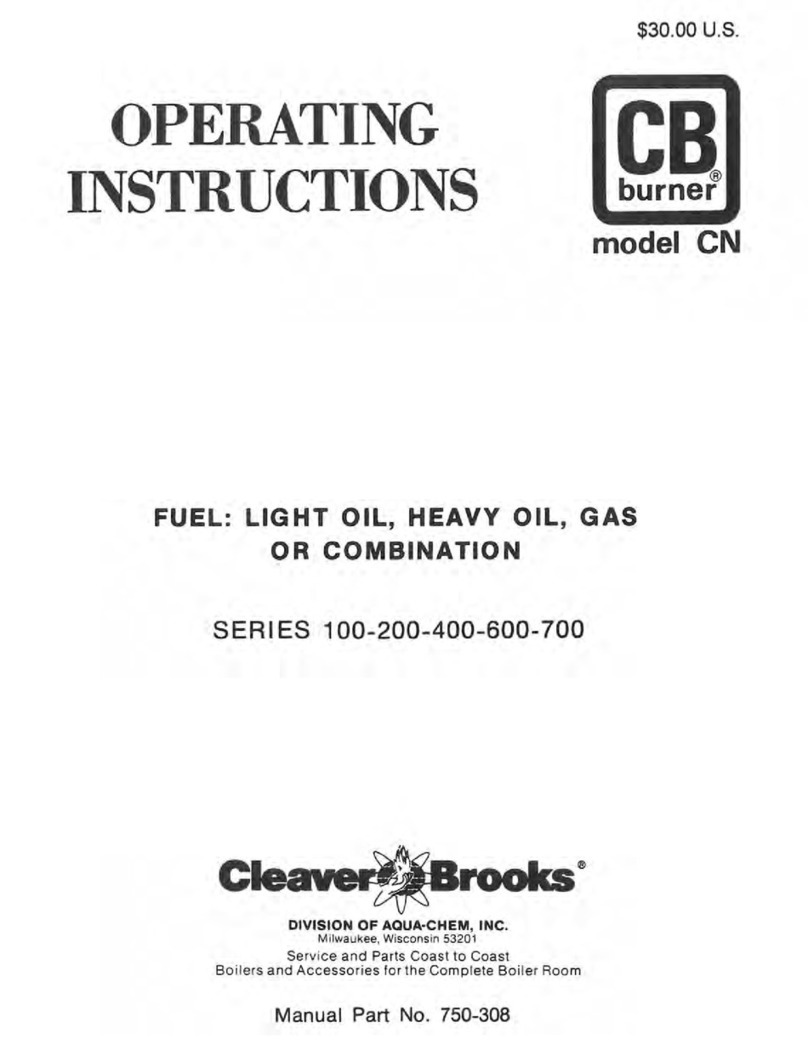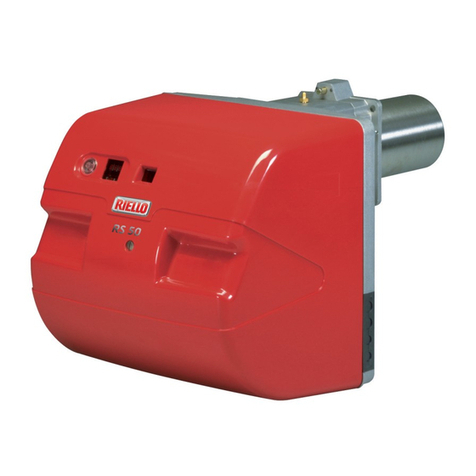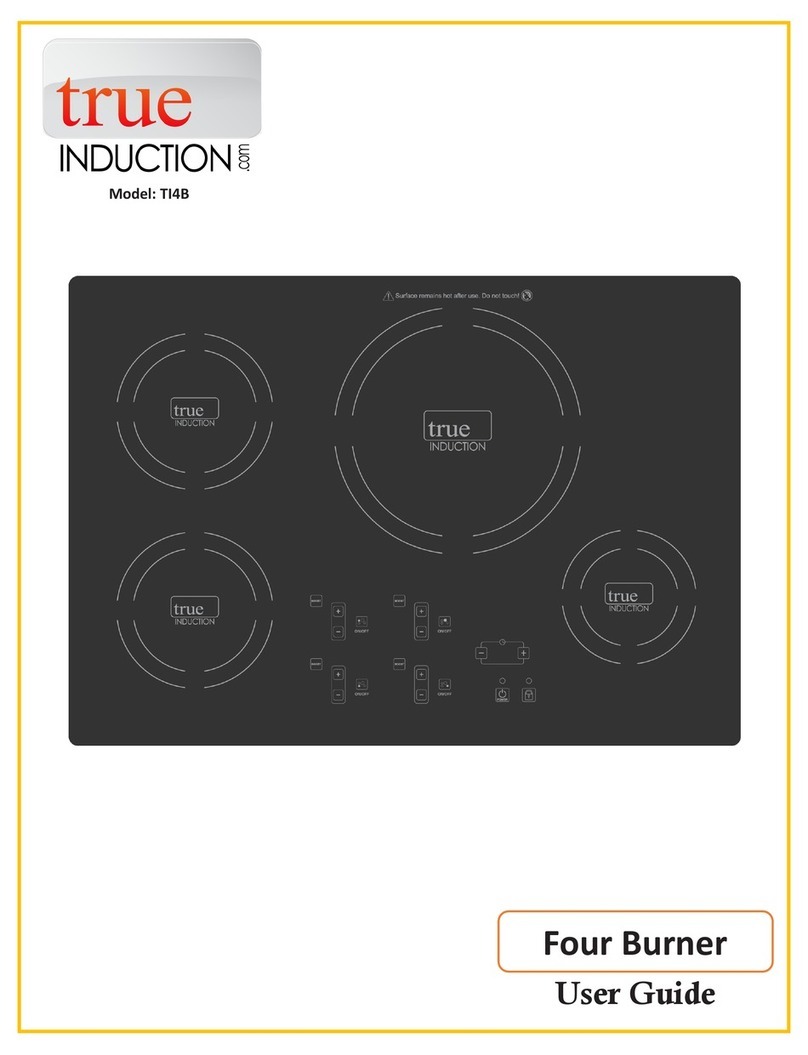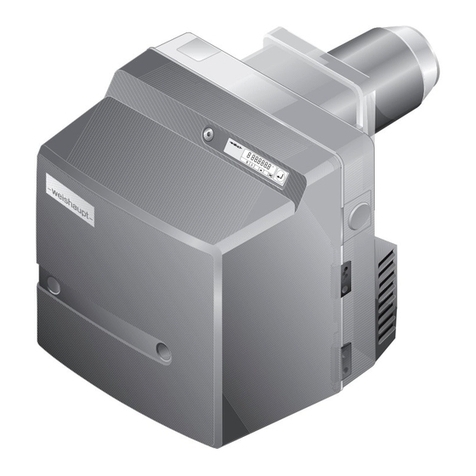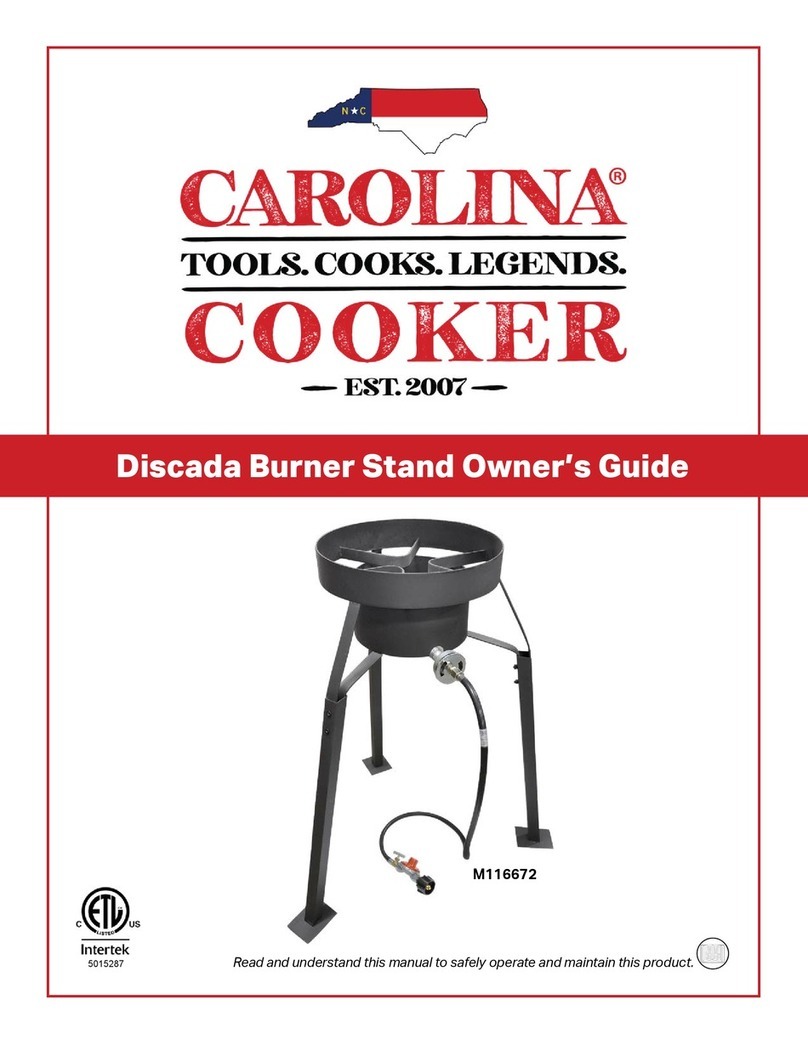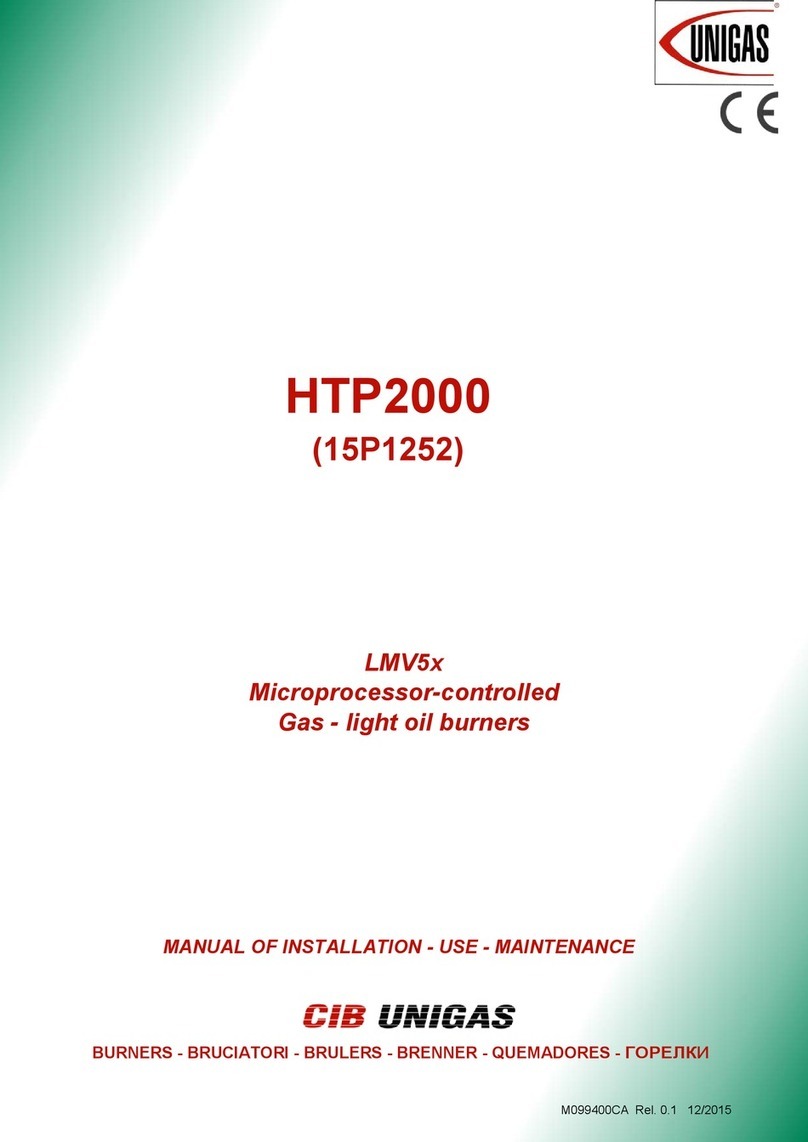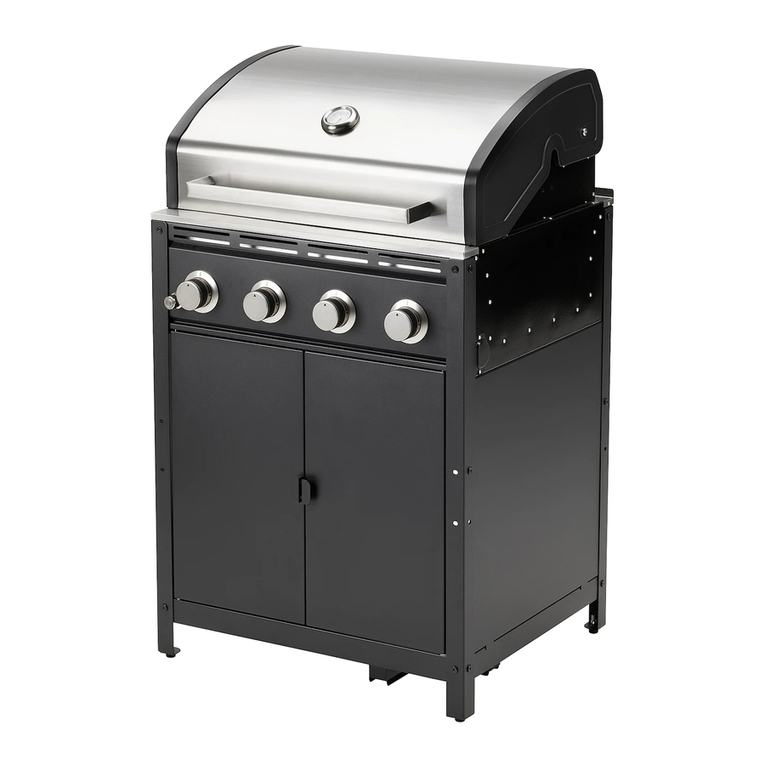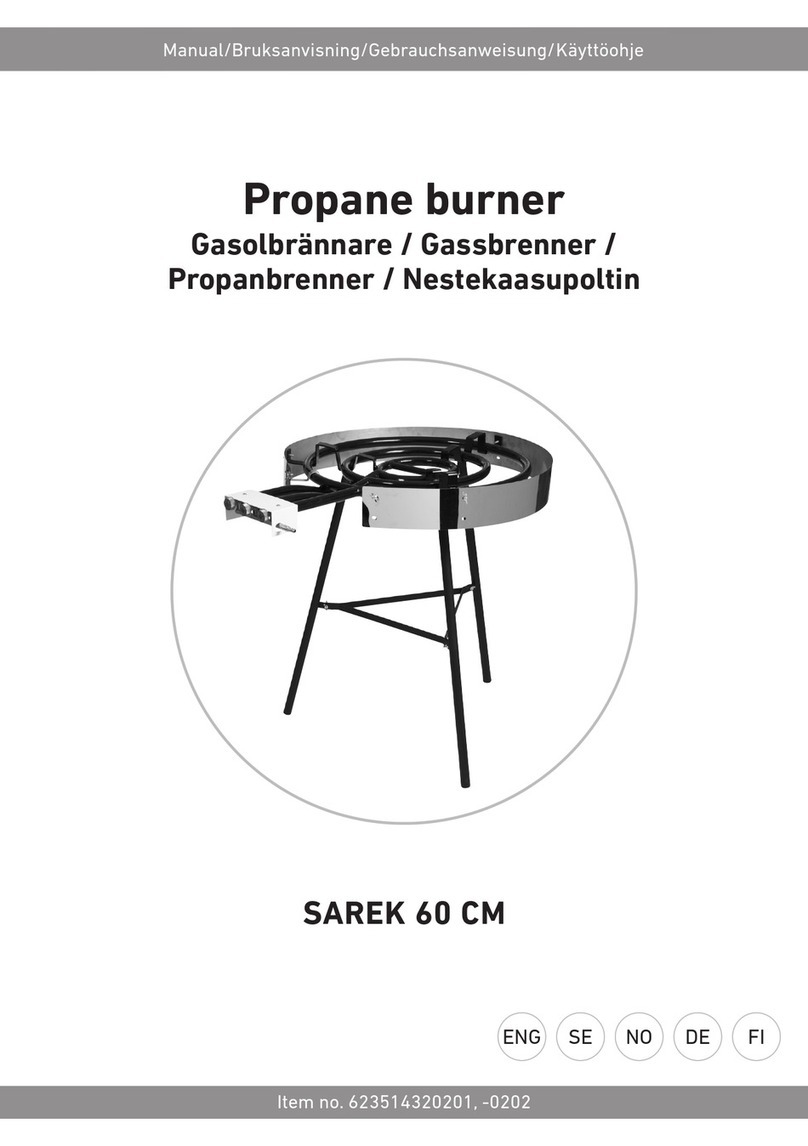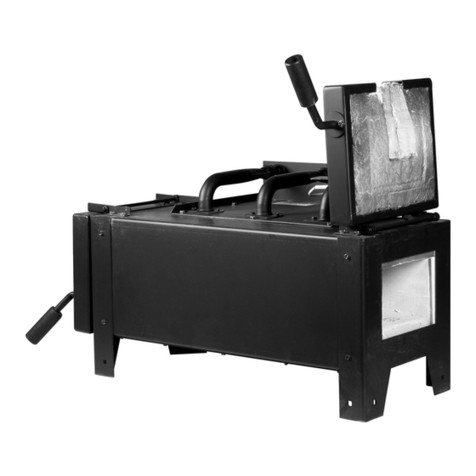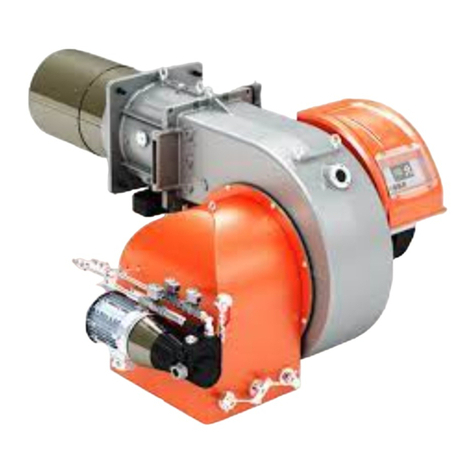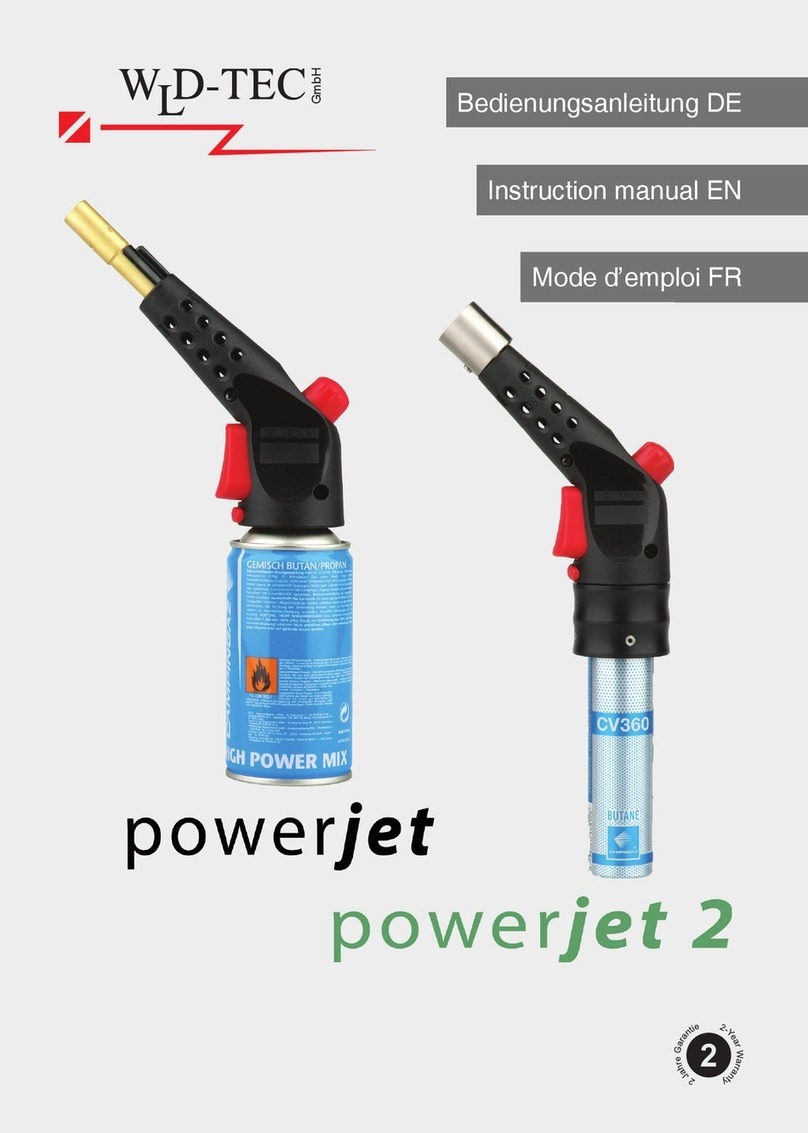
S1/SERIES TABLE OF CONTENTS
SECTION 1:0
OPERATING PRECAUTIONS ................................................1
MODEL DESIGNATIONS, SIZES & INPUTS .........................2
CHAPTER 1. INTRODUCTION
A. GENERAL INFORMATION ................................................3
B. DESCRIPTION ...................................................................3
C. OPERATING CONTROLS .................................................3
D. FLAME SAFEGUARD CONTROLS ...................................4
E. COMBUSTION AIR HANDLING SYSTEM ........................4
F. FIRING RATE CONTROLS................................................4
G. FIRING HEAD ....................................................................4
H. OIL SYSTEM AIR ATOMIZING ...................................... 4-5
I. GAS SYSTEM ................................................................ 6-7
CHAPTER 2. INSTALLATION
A. APPLICATION....................................................................8
B. INSTALLATION ..................................................................8
C. PACKING PLASTIC REFRACTORY AROUND OVEN .....8
D. SEPARATE COMPRESSOR MODULE .............................8
E. TYPICAL OIL SUPPLY LOOP ............................................8
F. CIRCULATING OIL PUMP .................................................8
G. OIL PRESSURE REGULATOR..........................................8
H. GAS PIPING ......................................................................8
MOUNTING SKETCHES. ................................................. 9-10
I. INSTALLATION CHECK LIST ..........................................10
OIL PIPING SCHEMATICS. .................................................11
GAS PIPING SCHEMATICS. ...............................................12
GENERAL ARRANGEMENT ................................................13
MOTOR ROTATION .............................................................14
CAUTION .............................................................................15
CHAPTER 3. OPERATION
A. PREPARATION FOR STARTING ....................................16
B. ELECTRICAL INTERFERENCE TEST ...................... 16-17
C. GAS PILOT FLAME ADJUSTMENT ................................17
D. START-UP SEQUENCE ..................................................17
E. AUTOMATIC SHUTDOWN ..............................................17
F. MANUAL SHUTDOWN ....................................................17
G. SAFETY SHUTDOWN .....................................................17
H. START-UP AND OPERATING. ........................................18
I. NORMAL OPERATION. ....................................................18
J. SHUTDOWN. ....................................................................19
CHAPTER 4. ADJUSTMENTS
A. GENERAL ....................................................................... 20
B. COMBUSTION ADJUSTMENT ON GAS AND OIL...... ...20
C. ELECTRICAL INTERFERENCE TEST.............................20
D. GAS SYSTEM.............................................................20-22
E. OIL SYSTEM...............................................................22-23
F. LINKAGE - MODULATING MOTOR............ .... ................23
G. FIRING RATE CONTROLS.............................. ................23
AIR DAMPER BOX ARRANGEMENT................................. . 24
GAS LINKAGE ADJUSTMENTS................................. ......... 25
OIL LINKAGE ADJUSTMENTS................................. ........... 26
F.G.R. BLADE LINKAGE ADJUSTMENTS........................... 27
AIR DAMPER BLADE LINKAGE ADJUSTMENTS............... 28
CHAPTER 5. MAINTENANCE
A. GENERAL. ....................................................................... 29
B. CONTROL SYSTEM. ....................................................... 29
C. PROGRAMMING CONTROL .......................................... 29
D. FIRING HEAD INSPECTION ........................................... 29
E. PILOT AND IGNITION ELECTRODE .............................. 29
F. FLAME SCANNER. .......................................................... 29
G. OIL NOZZLE .................................................................... 31
H. DIFFUSER ....................................................................... 31
I. FIRING RATE CONTROLS ............................................... 32
J. BURNER MOUNTING INSPECTION. .............................. 32
K. FUEL OIL SYSTEM ......................................................... 32
L. GAS SYSTEM. ................................................................. 32
M. ELECTRICAL SYSTEM ................................................... 33
N. EXTENDED SHUTDOWN. .............................................. 33
O. COMMON VENT LINE .................................................... 33
P. MAINTENANCE FLOW CHART ....................................... 34
CHAPTER 6. TROUBLE SHOOTING
A. AWARENESS. .................................................................. 35
B. EMERGENCY SHUTDOWN. ........................................... 35
TROUBLE SHOOTING GUIDE. ......................................36-38
SECTION 2:0
CHAPTER 7. LOW NOx SYSTEM
A. F.G.R. SHUT-OFF VALVE .................................................. 1
B. F.G.R. DAMPER ASSEMBLY ..........................................2-3
WARRANTY POLICY. .........................................................4-5
START-UP / SERVICE REPORT. ........................................... 6
PRODUCT SATISFACTION SURVEY ................................... 7
SECTION 3:0
PARTS SECTION
FIRING HEAD ASSEMBLY .................................................... 5
HOUSING COMPONENTS .................................................6-7
AIR DAMPER BOX................................................................. 8
AIR DAMPER BOX COMPONENTS .................................9-10
MOD MOTOR ....................................................................... 11
MAXON VALVE .................................................................... 12
GAS BUTTERFLY & LINKAGES .....................................13-14
OIL NOZZLE COMPONENTS .............................................. 15
OIL TRAIN ............................................................................ 16
AIR COMPRESSOR ............................................................. 17
